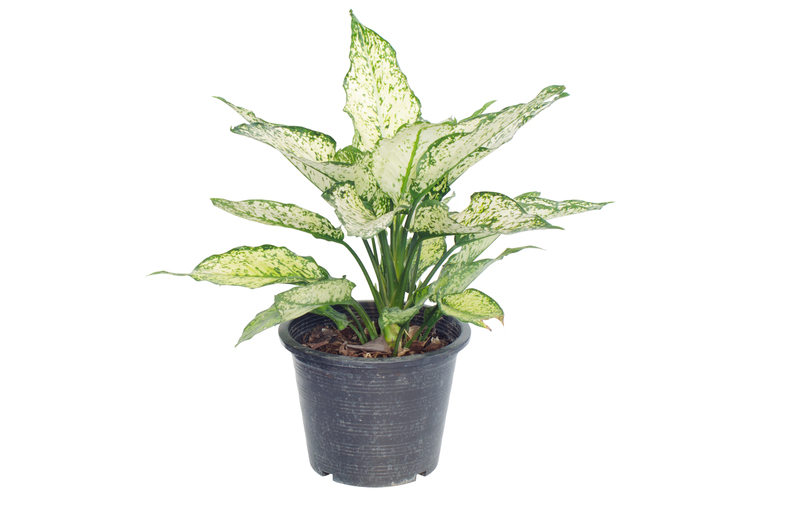Resilient Lawn Strategies to Tackle Stress During Summer Droughts
When the intense heat of summer arrives and rainfall becomes scarce, your once-lush lawn can quickly turn brown and brittle. Summer droughts are increasingly common, making it more important than ever to adopt effective and resilient lawn care strategies. In this comprehensive guide, we will explore actionable tips and innovative solutions to help you maintain a healthy, vibrant lawn, even in the face of prolonged drought.
Understanding Lawn Stress During Drought
Drought imposes multiple stress factors on a lawn:
- Limited water availability reduces the lawn's ability to uptake essential nutrients.
- High temperatures elevate evaporation, stripping soil and grass blades of moisture.
- Intense sun exposure leads to grass dehydration and browning

Choosing the Right Drought-Resistant Grass Varieties
Not all grass types are created equal when it comes to surviving drought. Selecting drought-tolerant grasses forms the foundation of a resilient lawn.
Warm-Season Grasses
- Bermuda Grass: Exceptionally heat-tolerant, spreads quickly, and uses water efficiently.
- Zoysia Grass: Dense, wear-resistant, and survives on little water.
- Buffalo Grass: Native to North America, requiring minimal irrigation.
Cool-Season Grasses
- Tall Fescue: Deep-rooted, tolerates heat better than other cool-season varieties.
- Fine Fescues: Blend of hard, creeping, and chewings fescues, known for tolerance to drought and shade.
Tip: For the best resilient lawn, mix grass species based on your regional conditions to maximize drought resistance.
Soil Preparation and Care for Summer Droughts
Healthy soil is at the heart of a drought-resilient lawn strategy. Well-prepared soils retain more moisture and help grass withstand dry periods.
Soil Aeration
Compacted soils limit water penetration and root development. Aerate your lawn, ideally in the spring or fall, to allow air, nutrients, and water to reach the roots effectively.
- Use a core aerator to remove small plugs of soil.
- Repeat at least once a year, especially in high-traffic areas.
Amend with Organic Matter
Adding compost or finely screened organic material improves soil structure and increases its ability to hold water -- critical for lawn drought resistance.
- Apply a thin layer (0.25-0.5 inch) of compost after aeration.
- Let rainfall or irrigation help work it into the soil.
Optimal Watering Techniques for Resilient Lawns
Efficient watering is crucial to keeping your lawn healthy without wasting resources during drought conditions.
Deep and Infrequent Watering
Deep, infrequent watering promotes deeper root growth, improving drought tolerance:
- Water early in the morning to reduce evaporation losses.
- Irrigate long enough to moisten soil 6-8 inches deep (usually 1-1.5 inches per week).
- Avoid frequent, shallow watering, which leads to weak, shallow roots.
Utilize Smart Irrigation Systems
- Install drip or soaker hoses to deliver water directly to the soil and roots.
- Smart timers and weather-based controllers automatically adjust watering schedules based on rainfall and temperature.
- Rain sensors prevent unnecessary irrigation during wet conditions.
Rainwater Harvesting
Collect rainwater from roofs into barrels to use during dry spells. This eco-friendly practice conserves tap water and ensures your lawn stays hydrated naturally.
Mowing Practices to Enhance Lawn Resilience
Mowing correctly during the summer heat makes a significant difference in your lawn's ability to survive drought.
- Set your mower blade to a higher setting (3-4 inches for most species). Taller grass shades soil, reduces evaporation, and encourages deeper root systems.
- Sharpen blades regularly for a clean cut that minimizes stress.
- Leave grass clippings on the lawn; they return nutrients and aid in moisture retention.
- Avoid mowing during peak heat - early morning or late evening is ideal.
Mulching and Ground Cover Solutions
Mulching is a vital summer drought strategy for both lawns and garden borders.
- Mulch around trees, flower beds, and garden edges to reduce soil temperature and lock in moisture.
- Organic mulches like shredded leaves, pine needles, and grass clippings are sustainable and improve soil quality.
- Mulched zones act as buffer areas, protecting the lawn perimeter and reducing overall evaporation.
Smart Fertilization for Drought-Resilient Lawns
Over-fertilizing during drought can burn your grass and worsen stress. For optimal results:
- Test your soil before applying any fertilizer to determine missing nutrients.
- Use slow-release or organic fertilizers which are less likely to scorch grass during dry periods.
- Time fertilization for late spring or early fall, avoiding heat waves and drought conditions.
- Minimize nitrogen-heavy feeds in summer; opt for potassium-rich blends to promote root strength.
Weed and Pest Control During Summer Drought
Weeds compete with lawn grass for scarce resources, worsening drought impact. In addition, drought-stressed lawns are more vulnerable to insect pests.
Proactive Weed Management
- Remove weeds manually or spot-apply herbicides where needed.
- Practice dense planting of drought-tolerant grasses to limit space for weeds to grow.
Pest Resistance
- Monitor for signs of chinch bugs, grubs, and other drought-loving pests.
- Introduce beneficial nematodes or natural predators as part of an integrated pest management plan.
Overseeding and Lawn Renovation Tips
Lawns may suffer thin or bare patches during drought. Proactive renovation helps restore lawn health and resilience:
- Overseed with drought-tolerant grass seed blends in early fall or late spring for cool- or warm-season types respectively.
- Lightly rake soil before sowing for better seed-to-soil contact.
- Topdress with a thin layer of compost or peat moss to retain moisture and encourage germination.
Leveraging Lawn Alternatives and Low-Water Landscaping
In especially drought-prone regions, consider alternative approaches for problem areas:
- Clover lawns: Require minimal watering and maintain a green hue even during dry spells.
- Native ground covers: Plants such as thyme, sedum, or creeping phlox offer beauty and function with less water.
- Replace high-maintenance turf with hardscapes, bark mulch, or decorative gravel in non-essential areas.
Additional Resilient Lawn Strategies and Tips
- Reduce lawn area in favor of drought-tolerant shrubs and ornamental grasses.
- Resist heavy foot traffic during drought, as stress from compaction and abrasion hinders recovery.
- Apply wetting agents (soil surfactants) to help water penetrate dry, hydrophobic soils.
- Stay informed with local drought advisories and adhere to restrictions on outdoor water use.

Signs of Drought Stress - How to Recognize Early Warning Indicators
Early recognition of stress signals helps you respond before lasting damage occurs:
- Grass blades turning blue-gray or folding lengthwise
- Footprints linger on the lawn after walking across it
- Overall wilting or yellowing of grass, especially in sunny areas
If you spot these signs, adapt your lawn drought management techniques and water as allowed by regulations.
Summary: Keep Your Lawn Strong in Summer Droughts
Maintaining a healthy, green lawn during a summer drought requires a combination of preventative and adaptive strategies. Focus on drought-tolerant grasses, improve your soil, water wisely, mow properly, and use mulch and organic practices to boost your lawn's natural resilience. By practicing these tough, eco-friendly resilient lawn strategies, you will not only save time, water, and money, but also enjoy a beautiful yard even during the hottest, driest months.
Key Takeaways
- Choose drought-resistant grasses suited to your climate
- Enhance soil with aeration and organic matter
- Prioritize deep, infrequent watering and utilize efficient irrigation systems
- Raise mowing height to encourage deep roots and retain moisture
- Mulch and overseed to prevent bare spots and improve ground coverage
- Manage weeds and pests proactively
- Consider lawn alternatives and smart landscape design for low-water use
Implementing these resilient lawn strategies for summer droughts will ensure that your lawn remains healthy, vibrant, and better able to withstand the challenges of increasingly dry and hot seasons. With the right approach, you can take pride in a lush, stress-tolerant landscape all summer long.